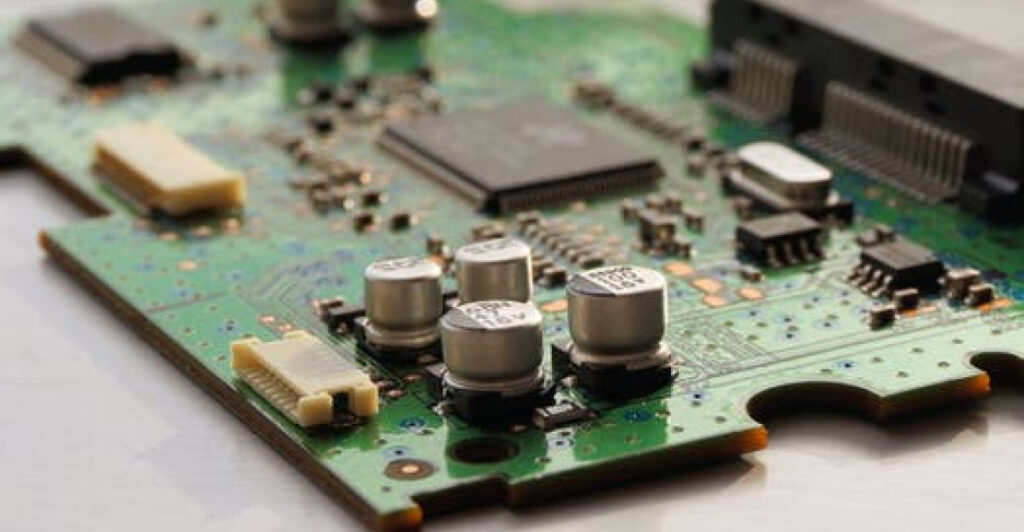Has your in-house engineering capability reached its limit? In a recent survey, more than 80 percent of engineering executives report talent gaps in crucial areas. For companies developing new electronics products, an experienced outsourcing partner can help fill these gaps — thus freeing up in-house talent for complex projects, enabling a faster response to surges in demand, and providing access to missing capabilities.
Here are six signs it’s time to outsource electronics engineering services.

1. Lack of internal expertise.
Electronics engineering requires highly specialized skills that typical mechanical or software engineers may not possess (like circuit design, PCB layout, and firmware coding). To keep pace with rapidly emerging electronics technologies, companies must also keep internal teams continuously updated on the latest RF, battery, and semiconductor technologies, etc. — which requires significant investment.
Additionally, internal teams are often limited by their project history, while experienced engineers have seen hundreds of product development cycles and can avoid costly errors. With this experience comes creativity. External specialists regularly solve technical challenges within a specific product area and bring innovation, while internal teams can get blinded by assumptions.
The takeaway: Product development may get delayed without the right technical experts. By leveraging external specialists that your company doesn’t employ full-time, your company can close gaps in capability and perspective, therefore speeding up development cycles.
2. Insufficient tools and equipment.
Developing complex electronics requires extensive labs, sophisticated EDA software, and new equipment — all of which entail major, ongoing capital and maintenance costs. Software alone (like Cadence Virtuoso, Ansys HFSS, and Altium) can cost tens of thousands per seat, an investment that may not be justified if you only need it temporarily. Electronics labs require millions in capital (for clean rooms, thermal/vibration chambers, anechoic chambers, and testing rigs, for example). And new equipment is needed for new technologies like 5G, autonomous systems, and IoT, but it’s not always viable to purchase everything.
Calibration and maintenance of tools and equipment can also be costly and time-consuming. In-house engineers often get pulled into upkeep rather than design work, so it makes more economic sense to leverage the capabilities of an outsourcing provider who maintains state-of-the-art tools and labs.
The takeaway: Tools and equipment become outdated quickly and staying current gets expensive. For many companies, outsourcing is a smart way to gain access without the overhead.

3. Tight deadlines or schedules.
Electronics projects require extensive testing and certification that may extend timelines — sometimes making products outdated upon launch. Delays may also mean competitors release similar products first, resulting in potential IP losses.
Outsourcing sidesteps these issues. Companies that outsource electronics development can accelerate their development cycles — and their time to market — which isn’t always feasible with internal resources alone. Quick prototyping allows for more design iterations and testing, which leads to higher product quality and performance. Accelerated schedules also impress investors/shareholders, and demonstrates organizational agility and responsiveness.
The takeaway: If your product needs to launch quickly, outsourcing to a company with ready electronics engineering resources can accelerate your time-to-market. The result is happier customers, stronger financial outlooks, and reduced competitive risks.
4. A project lies outside your team’s core competencies.
For a company focused on software, industrial design, etc., managing complex electronics engineering projects may spread resources too thin. Keeping up with rapidly changing electronics technologies, software tools, and components diverts R&D attention from a company’s core specialties and IP strength.
On the other hand, outsourcing electronics engineering work allows for concentration on what your team does best. Companies that concentrate on their true areas of expertise and outsource complementary capabilities are often more agile and innovative. This focused investment amplifies a company’s strengths rather than risking mediocrity across too many specialties.
The takeaway: Developing electronics products requires involvement across mechanical, electrical, systems, and software engineering. Companies without those specializations are better served allying with external experts than trying to build all competencies internally.

5. Staff is wearing too many hats.
Bandwidth-constrained engineering departments operate inefficiently. When companies try to save costs by not hiring enough specialists, senior engineers are often distracted by routine, operational tasks rather than complex problem-solving. They may also split time across too many responsibilities, making them overworked and unable to fully focus on specialized technical work. Rather than driving projects forward, they spend their time juggling competing priorities — leading to slipped deadlines, less innovation, slow progress, and lost revenue.
However, outsourcing provides supplemental capacity so internal teams can focus on high-value work aligned with a company’s strategic goals. This results in increased productivity, motivation, and creativity.
The takeaway: Thinly spread engineers trying to handle multiple responsibilities may slow projects down. Outsourcing creates bandwidth so your team can play to their strengths.
6. Your organization has short-term needs.
Taking on a temporary project often requires rapidly scaling up staff. However, short prototype builds or small pilot projects often don’t justify recruiting full-time talent, as this can be costly and time-consuming. Additionally, once a short-term project ends, there’s a cost to maintain specialized talent, and downsizing saddles HR with paperwork and severance costs.
If you need extra engineering manpower or niche technical expertise for a temporary project or prototype, it’s more efficient to use an outsourced solution rather than hiring. In cases of unexpected employee leave or resignations, outsourcing can also keep projects moving while a replacement is found and onboarded.
The takeaway: Outsourcing provides on-demand engineering scale to match needs on a project basis, without risks and costs of over or under-hiring full-time staff. For short-term needs, it provides essential agility and flexibility.
Could your company benefit from increased engineering capabilities and bandwidth? Consider collaborating with an external electronics engineering partner. The right partner can be a force multiplier — providing expertise, capacity, and strategic value well behind cost savings. If you’re ready to accelerate your next electronics project, contact us today to discuss your needs.


